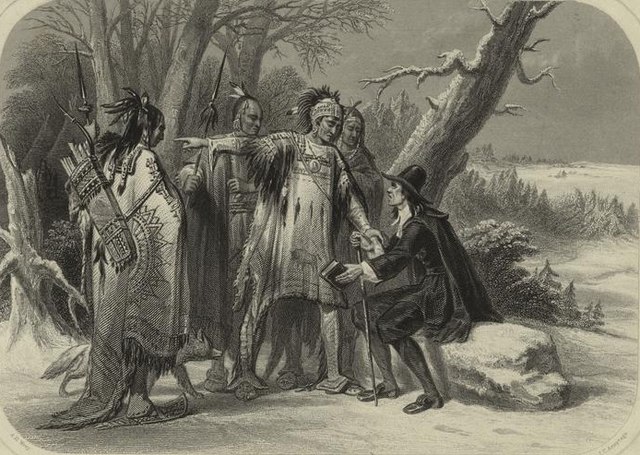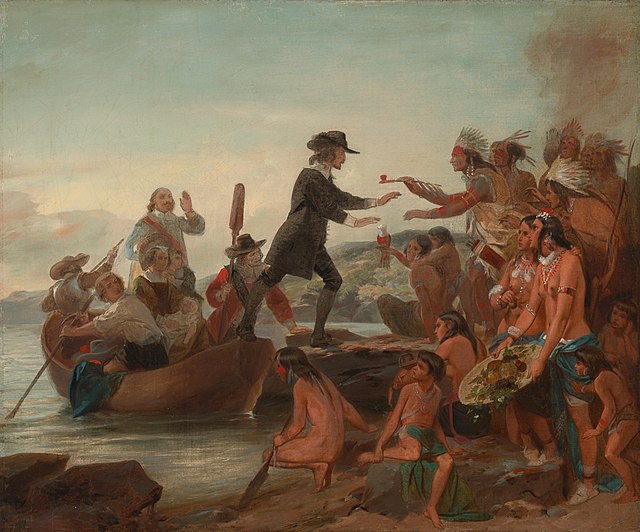The Narragansett people are an Algonquian American Indian tribe from Rhode Island. Today, Narragansett people are enrolled in the federally recognized Narragansett Indian Tribe. They gained federal recognition in 1983.
Roger Williams and the Narragansetts, a 19th-century engraving after a painting by A. H. Wray
The Narragansett Indian Church in Charlestown was founded in the 1740s. This building was constructed in 1859 to replace the one that had burned down.
20 ft (6.1 m) high sculpture of Enishkeetompauog Narragansett in Sprague Park, Narragansett, Rhode Island. Among the tribal leaders who had attended the 1982 dedication were Princess Red Wing and Roaring Bull, who was the last traditional war chief of the Narragansett Tribe.
Rhode Island is a state in the New England region of the Northeastern United States. It borders Connecticut to its west; Massachusetts to its north and east; and the Atlantic Ocean to its south via Rhode Island Sound and Block Island Sound; and shares a small maritime border with New York, east of Long Island. Rhode Island is the smallest U.S. state by area and the seventh-least populous, with slightly fewer than 1.1 million residents as of 2020; but it has grown at every decennial count since 1790 and is the second-most densely populated state, after New Jersey. The state takes its name from the eponymous island, though nearly all its land area is on the mainland. Providence is its capital and most populous city.
In 1636, Roger Williams and his followers founded the settlement of Providence Plantations.
In 1936, on the 300th anniversary of the settlement of Rhode Island in 1636, the U.S. Post Office issued a commemorative stamp, depicting Roger Williams
In 1680, Newport was the third largest Anglo-American city. It remained a prosperous population center until the 1770s.
Providence Revolutionaries burned HMS Gaspee in Warwick in protest of British customs laws.







